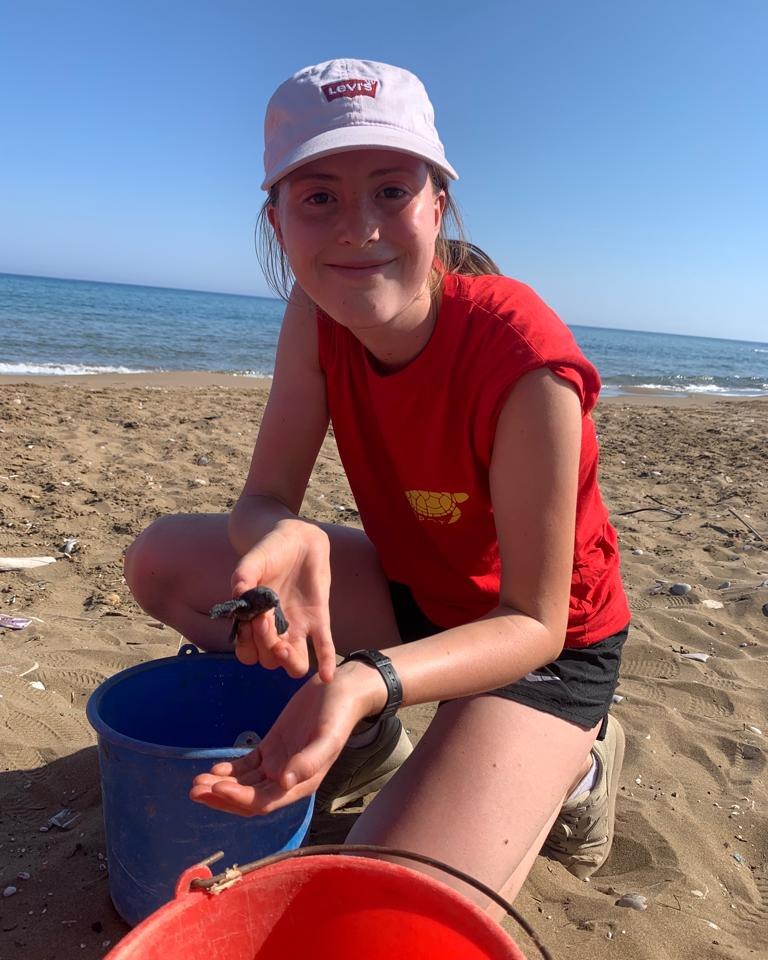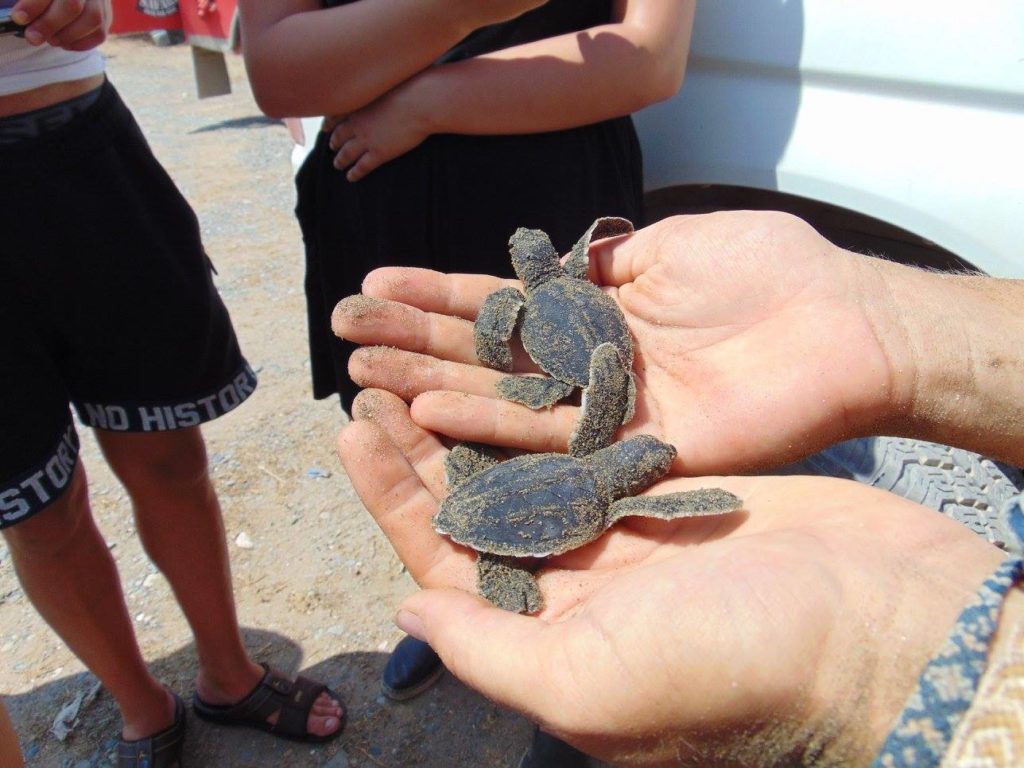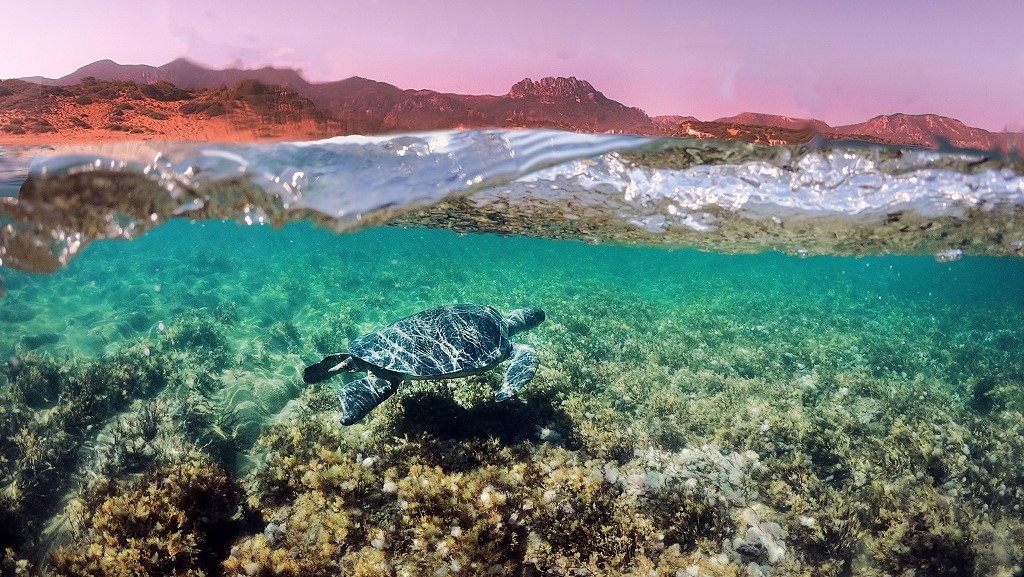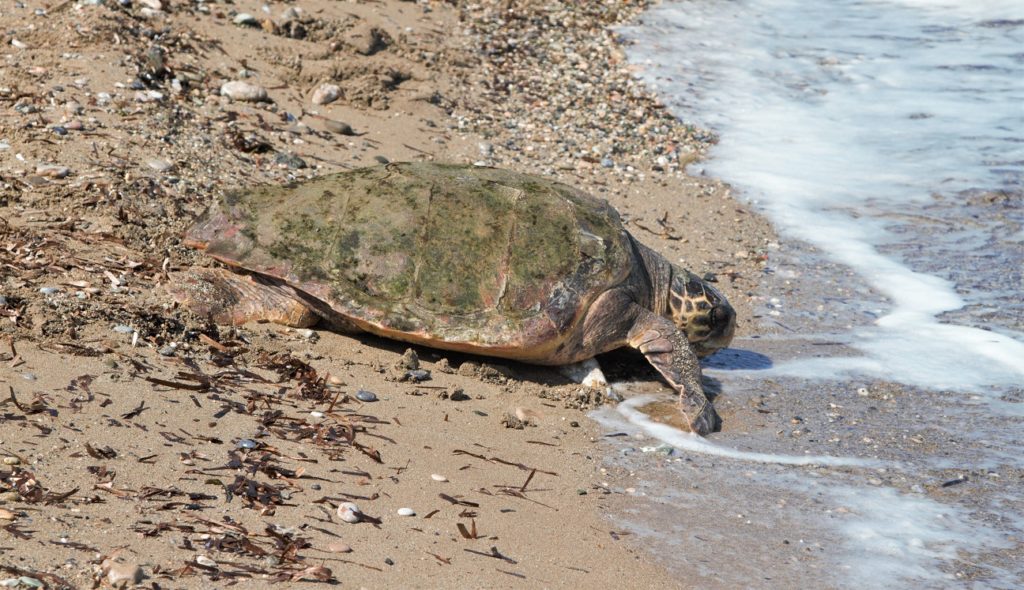
It’s turtle time in North Cyprus!
The height of summer is when the nests laid in the sand in springtime, heat up sufficiently to encourage hatchlings to burst from their shells and head for the sea.
It’s a perilous path for the tiny creatures taking their first steps in life. Breaking out of the sand is hard work. Then they must scatter directly to the shore, avoiding any predators on the way.

Fortunately, help is at hand. The much-loved reptiles have become one of the main symbols of North Cyprus and there are several volunteer groups to support them. SPOT, the Society for the Protection of Turtles, is the oldest animal charity group in the country. In collaboration with the University of Essex, it runs the annual Marine Turtle Conservation Project, to monitor numbers, guard nests – and help those newborns get safely away!
There are two main types of sea turtles nesting along the coast of North Cyprus, the Loggerhead (Caretta Caretta) and Green Turtle (Chelonia Mydas). Both are listed as endangered species and under strict protection. Ronnas Bay in Karpaz and Alagadi, east of Kyrenia, are rated as the 3rd and 5th most important nesting beaches of the green turtle in the entire Mediterranean.

During the last decade, the number of green and loggerhead turtles nesting on the beaches monitored by MTCP has been consistently increasing. As a result, five Natura 2000 Specially Protected Areas have been designated and everyone on the island knows that sea turtles are under protection. But they remain under threat from fishing, plastic rubbish- fatal if swallowed- and loss of habitat.

To ensure the maximum chances of survival, the nests are temperature tested before being gently unearthed by the volunteers. The hatchlings are gathered to be released en masse. This fantastic experience takes place in some forty nesting beaches and can be shared by visitors, by arrangement with the animal welfare groups.





